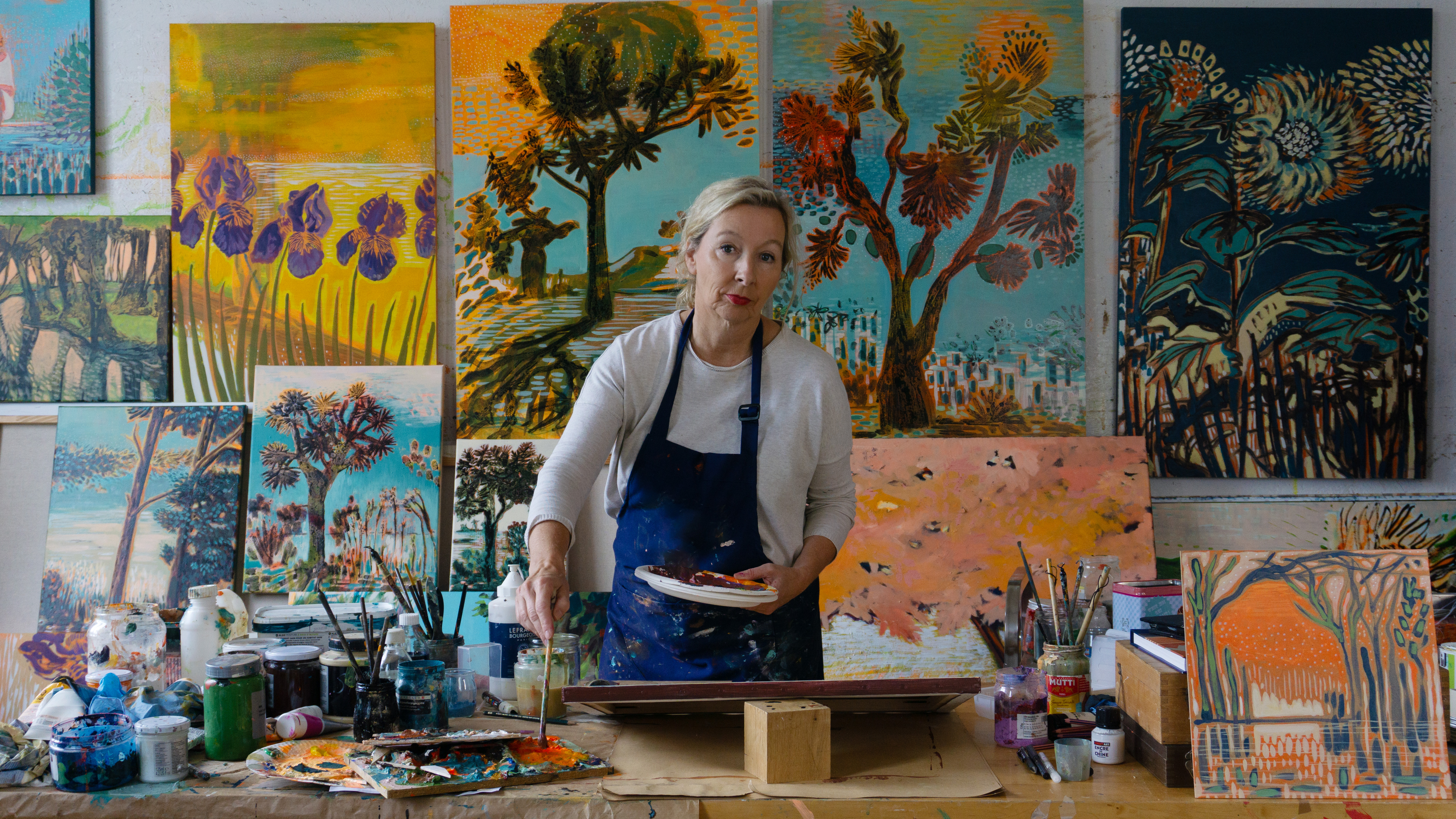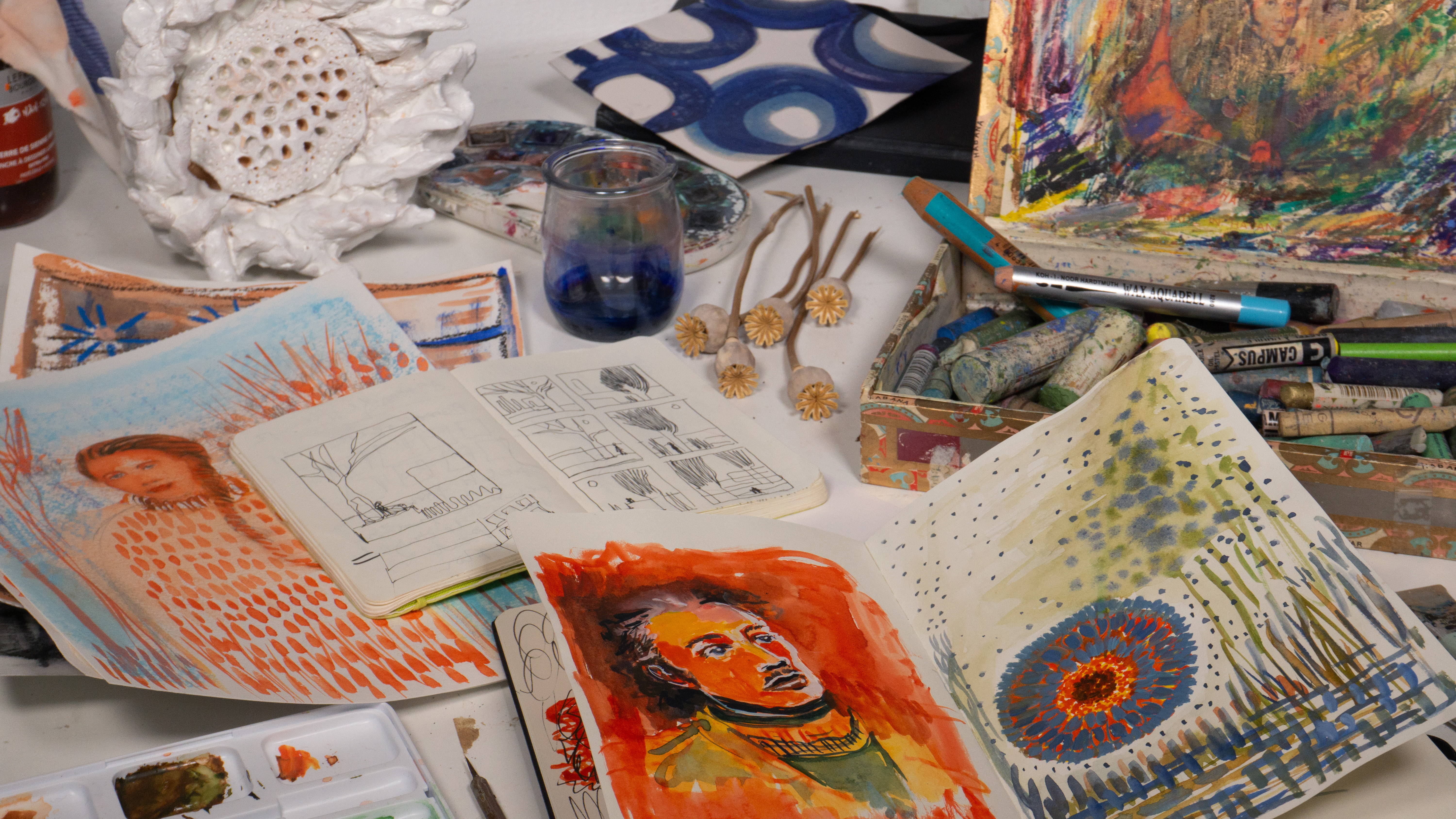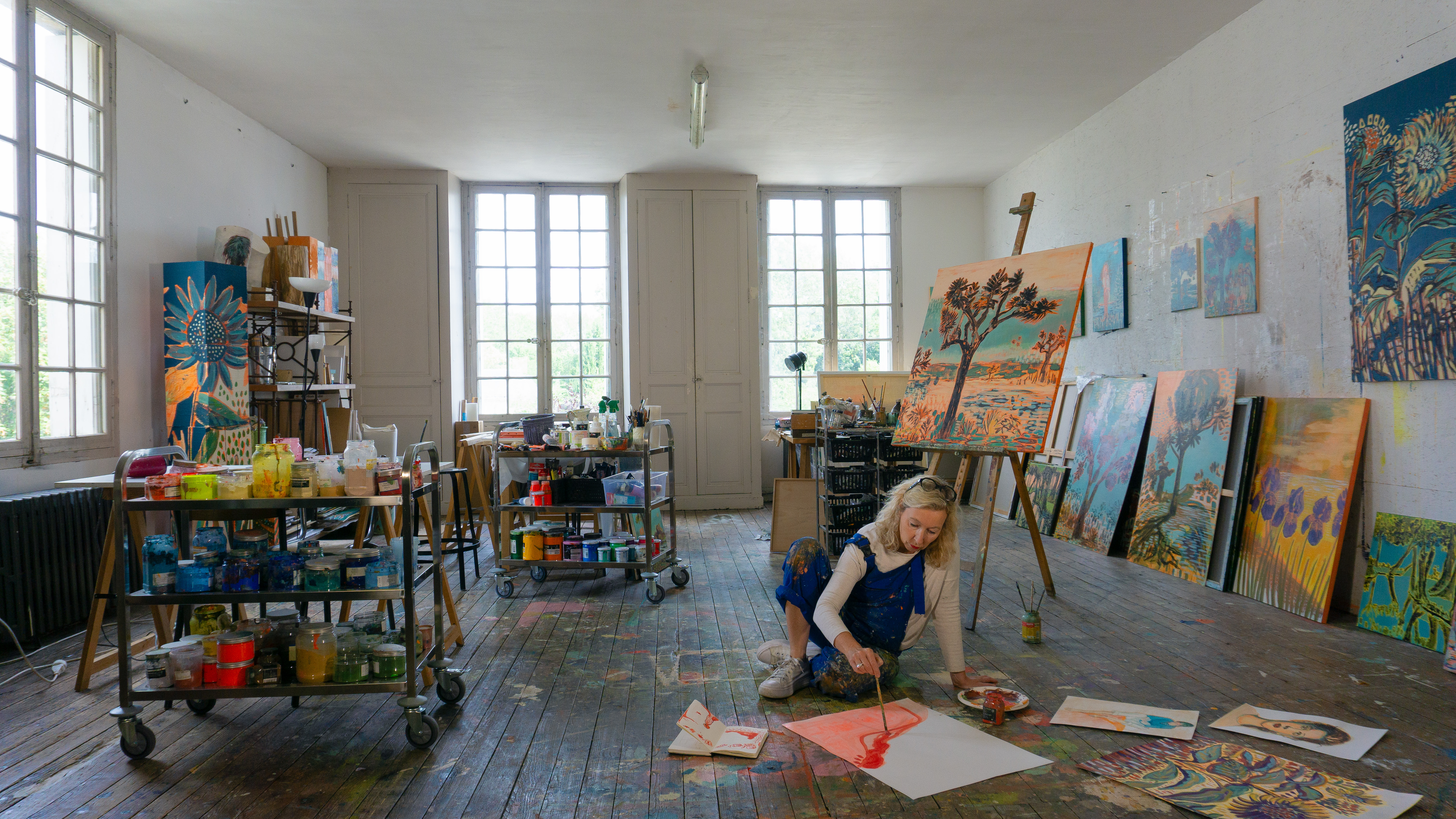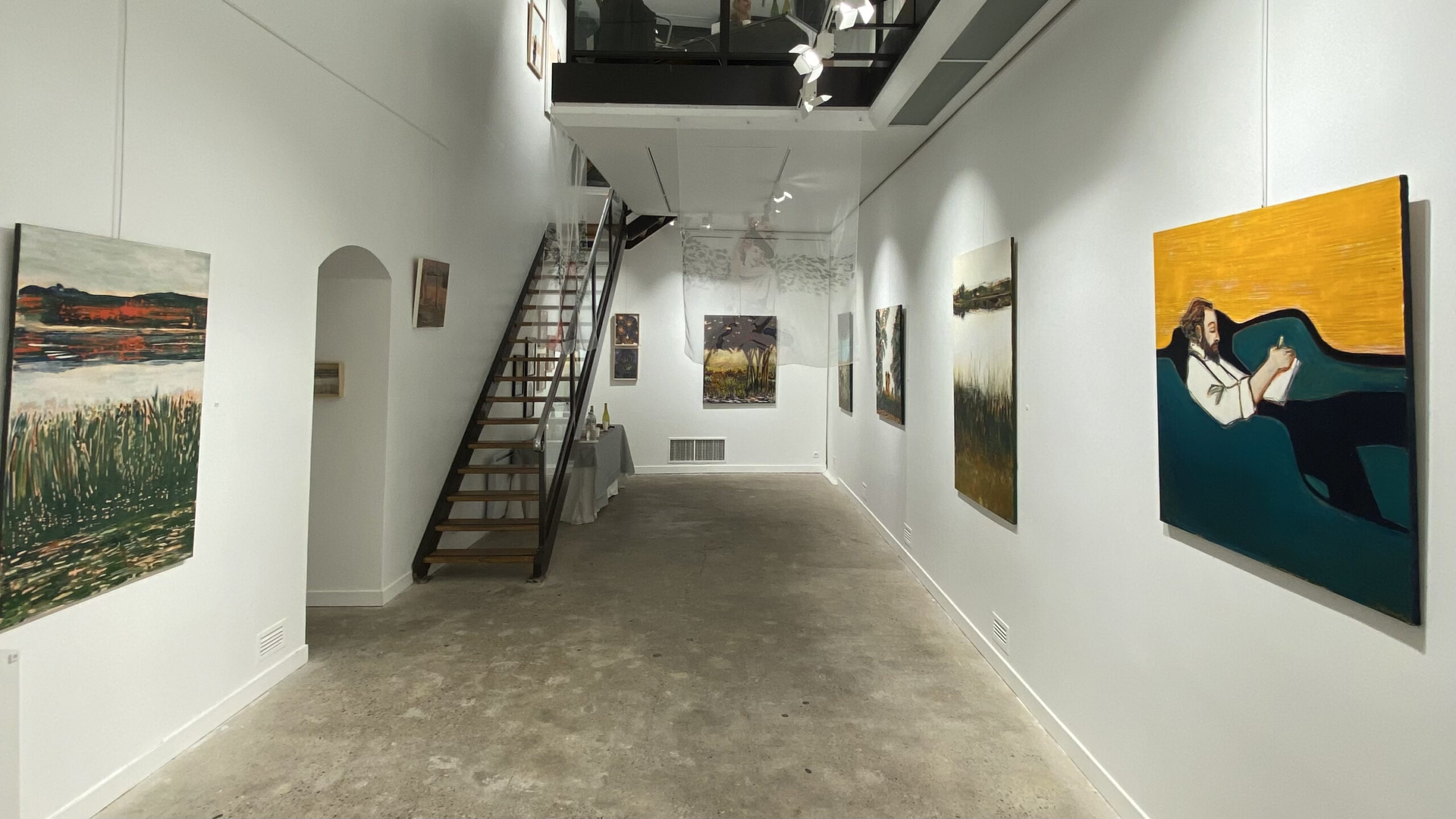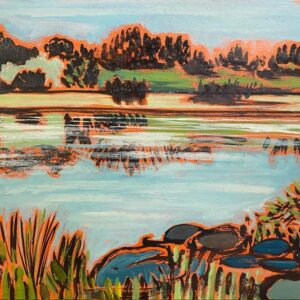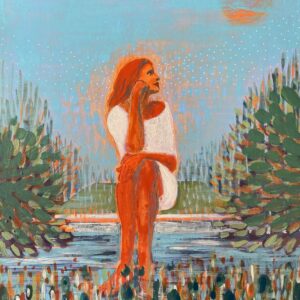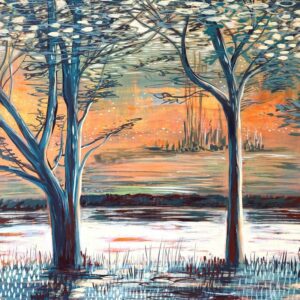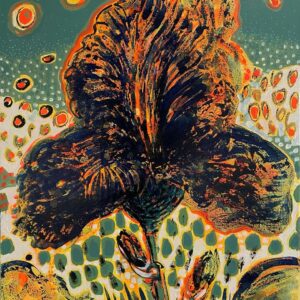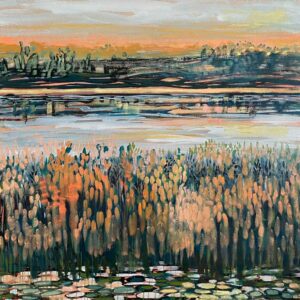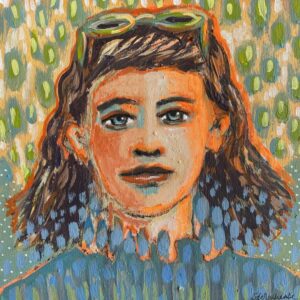One to Watch
 Stéphanie de Malherbe’s Artistic Rhythm
Stéphanie de Malherbe’s Artistic Rhythm
French artist Stéphanie de Malherbe gives insight into her process for creating her lively and inspirational landscapes and portraits. Using the color orange, she imbues each painting with a hopeful, warm glow that brings the viewer a sense of joy and nostalgia. Stéphanie earned her Master’s degree in graphic design from Penninghen Ecole Supérieure d’Art Graphique in Paris and has since exhibited extensively across Europe and at The Other Art Fair.
Tell us about who you are and what you do. What’s your background?
My name is Stéphanie de Malherbe, born and raised in Paris. After I finished my graphic art school at Penninghen, I worked with the fashion designer Jean-Paul Gaultier. After my first solo exhibition, I moved to Mexico and lived there for eleven years. I then spent five years in Seville and then Madrid. I returned to France with my husband and four children in 2010. The places I have lived in have influenced my work, subject, and colors.
What does your work aim to say? What are the major themes you pursue in your work? Can you share an example of a work that demonstrates this?
Light, strength, movement, color, silence, peace, poetry, rhythm, spontaneity, freedom, and hope are words that come to mind to describe my work. The orange color is omnipresent in my work to represent light and hope. I find spontaneity and freedom of movement in approaching the canvas with no previous drawing, just with layers of warm colors. I then define the subject with continuous lines. The silence and peace in my landscapes come from the presence of the horizon and solid color spaces, with dots and small brush strokes floating in the air. My painting series “Reflets,” or “Je Voudrais du Soleil Rouge,” are inspired by the Loire or the lakes where I live and work. I like the rhythm of seasons, plants, round stones, and herbs growing towards the sky. The reflection mirrored in calm water transmits peace.
Can you walk us through your process for creating a work from beginning to end?
I have three different ways of approaching the process of painting. The most common is a free transformation and interpretation of something that strikes me or moves me, either from everyday life or from a picture. When working on a commissioned portrait, I focus all of my attention on the eyes, which are the reflection of the soul. The third way I approach a work comes from a deep necessity to express a feeling or idea. The idea comes first, and then I draw or paint from imagination. No matter the approach, I start by covering the canvas with a warm color in acrylics. Then, I continue by painting with oil or acrylic in a complimentary tone and add lines and dabs of paint. Color is crucial to me, and I look for contrasts between cool and warm tones. I mostly like black in drawings and often use ink to draw the main subject in my paintings. Within these three approaches, the ideal is to have an emotion as a trigger for the creative process. This allows the enthusiasm and strength of starting something new to set out on a discovery.
Who are your biggest influences and why?
Many painters influence me, the Nabis painters especially. Bonnard and Vuillard for their colors, poetry, and decorative paintings. Toulouse Lautrec and Egon Schiele for their drawings and silhouettes. Basquiat for his strong lines, and Per Kirkeby for his abstract and colorful way of interpreting landscapes.
How does your work comment on current social and political issues?
Beyond political and social issues, I believe human beings all have demands of the heart and a common search for meaning, the absolute, and infinity. Art has this capacity of showing what can be invisible to the eye and what is at the same time so real. Painting, music, and theater can awaken the fibers of one’s heart, in what is common to all and, therefore, can bring more peace, hope, and love between people precisely if it stays apolitical.
How do you hope viewers respond to your works? What do you want them to feel?
I hope my work awakens the viewer to an emotion that could introduce them to a new way of seeing and embrace life from a broader angle. What joy if my work can catch a glimpse of the ineffable!
Do you prefer to work with music or in silence?
Music is very important in my painting process. It helps me concentrate! Usually, I start in the morning with classical music, then jazz, and then all kinds of new music that these audio streaming platforms help us to discover.
Who are your favorite writers?
Rainer Maria Rilke, Pablo Neruda, and David Foenkinos.
